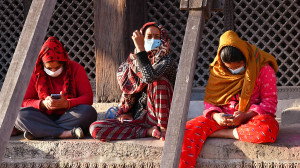National
Karki government praised for disaster response
Despite the tragedy in Ilam where dozens died in landslides, timely road closures and early warnings helped limit losses across the country.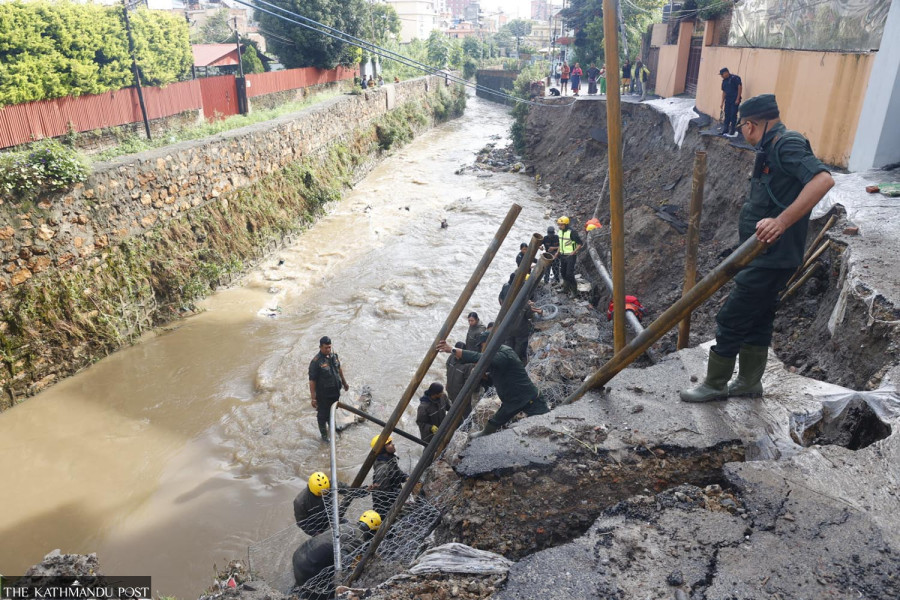
Purushottam Poudel
Swift action by the interim government led by Sushila Karki, formed after the Gen Z protests on September 8 and 9, is drawing widespread praise for minimising loss of life and property in this year’s floods and landslides.
Early warnings, road closures, and on-the-ground inspections helped avert large-scale casualties across much of the country, though the Ilam disaster, where dozens were killed, has exposed the limits of forecasting.
The floods and landslides triggered by heavy rainfall have caused significant loss of life and property in Ilam. According to preliminary reports, scores of people have been confirmed dead, while several others remain missing, and 41 families have been displaced by the disaster.
This year, government agencies took the Meteorological Department’s weather forecast warning seriously. Movement of all vehicles, including on major highways, was halted in time.
Energy Minister Kulman Ghising, who oversees the Urban Development ministry apart from the Ministry of Energy, inspected and monitored the BP highway and the Mid-Hill highway on the Vijaya Dashami day, the main day of the 15-day Dashain festival.
Taking into account the early warning issued by the Department of Hydrology and Meteorology regarding continuous rainfall from October 3, the government had begun efforts several days in advance to mitigate potential risks.
As part of this initiative, Minister Ghising visited the BP Highway to inspect areas damaged during continuous rainfall around the same time last year. The BP Highway is one of the major roads connecting Kathmandu with eastern parts of Nepal.
According to the Ministry of Physical Planning, Minister Ghising also issued a prior directive to restrict vehicular movement along the route, considering potential risks.
In addition, the government demonstrated readiness by deploying excavators and technical personnel on standby in high-risk areas such as the Muglin-Narayanghat road section well in advance.
Former lawmaker Sumana Shrestha said the government’s visible response in the face of the current disaster stands in contrast with that of the KP Sharma Oli-led government during a similar disaster last year, Shrestha said that the current government has performed much better.
Shanti Mahat, spokesperson for the National Disaster Risk Reduction and Management Authority (NDRRMA), however, cautioned against hastily concluding that disaster losses had been reduced.
She noted that with less rainfall, flooding may have been avoided, but it would be premature to definitively claim that damage reduction itself has been reduced at the moment.
After the heavy rainfall on September 27 last year, the government was criticised for failing to carry out rescues even within the Kathmandu Valley. At that time, then prime minister Oli, who was in New York to address the United Nations General Assembly, faced backlash for not returning home promptly despite the disaster.
More than that, he drew sharp criticism for his remark made during a press conference at Kathmandu airport upon his return, where he stated that there was no point in criticising the government authorities for delay in rescue operations arguing that even weather forecasters cannot predict where the landslides occur exactly. It is against this backdrop that comparisons are being drawn between the performance of the Oli-led government and the current Karki government.
At least 238 people lost their lives last year due to the monsoon-induced floods and landslides.
It is not only former lawmaker Shrestha who has praised the government’s response. Former Executive Director of the National Disaster Risk Reduction and Management Authority (NDRRMA), Anil Pokhrel, also commended the Karki government’s proactive efforts.
He said the precautionary measures adopted before the disaster struck helped minimise the damage. From public announcements through loudspeakers to awareness campaigns on social media, as well as the timely decision to close roads helped reduce losses, he noted.
Police officers at the exit points from Kathmandu Valley on Saturday were seen urging drivers and other motorists through loudspeakers not to leave Kathmandu Valley as road conditions outside the Valley were impassable due to landslides and floods.
However, Pokhrel stressed that this was not solely the result of the current government’s efforts. “Last year too, we had decided to close roads to reduce risk, but because those decisions were not enforced, the country suffered heavy human losses,” he said. “The fresh experiences from last year made it easier for the government this time to make quick decisions, which helped keep the damage lower.”
As for the Ilam deaths, Pokhrel said the extent of destruction there was beyond prior assessment. “We had not anticipated damage on that scale in Ilam,” he said.
While the previous government faced criticism for failing to manage disasters effectively despite ministerial instructions, what made the present government’s approach effective?
Former lawmaker Shrestha argues that it is wrong to assume ministers merely give directives.
“Ministers are responsible for fostering a culture of work, not just for issuing orders,” Shrestha said. “Once such a work culture is established, the government can effectively mobilise the bureaucracy and subordinate bodies, as the present government has done.”
NDRRMA spokesperson Mahat said her office had carried out its responsibilities in a similar manner last year as well, but the public was less responsive.
“This time, however, people seem to have learned from last year’s experience, which made the situation somewhat easier to handle,” Mahat said. “Nonetheless, the government’s concrete planning also played an important role.”
Apart from mobilising the state agencies for the possible rescue operation, the interim government also declared a two-day national holiday for Sunday and Monday.
When the public is lauding the government for its timely initiatives, Minister Ghising, stated that due to public and government alertness, human casualties resulting from the floods and incessant rain were significantly less. Speaking at a press conference on Sunday, Ghising said that while there was heavy rainfall leading to floods, there were no significant losses except for tragic incidents in Ilam.
At least 37 people were killed in landslides in Ilam district alone as of Sunday evening.
Minister Ghising clarified that a landslide triggered by torrential rainfall in Ilam caused human casualties, but apart from that, losses in other areas were minimal.
He further mentioned that although several regions suffered physical damage due to the floods and landslides, the government will prioritise reconstruction efforts.
“Due to the government’s preparedness and public awareness, there were no major human casualties caused by the floods. Ilam experienced 351 millimetres of rainfall, which led to landslides resulting in loss of life. However, no such incidents have been reported elsewhere,” said Minister Ghising.
While the government claims success in minimising losses, former director general of the National Disaster Risk Reduction Management Authority, Pokhrel, argues that it is also time to reflect on why 60 to 80 millimetres of rainfall in the Kathmandu Valley was enough to disrupt major highways connecting the capital.
Pokhrel points out that such recurring problems during the monsoon season stem from flawed approaches to infrastructure development. Calling it a collective failure of the state apparatus, Pokhrel stressed the need for greater caution and responsibility in the construction of physical infrastructure in the days ahead.
“While reconstructing the destroyed highways and other infrastructure, we need to build it in such a way that these kinds of problems won’t occur in the days to come,” Pokhrel added.
Infrastructure expert Surya Raj Acharya also points out that the country faces recurring closures of major highways during every monsoon due to the lack of infrastructure suited to Nepal’s geography and weather systems.




 10.12°C Kathmandu
10.12°C Kathmandu
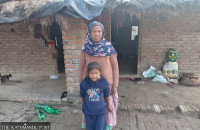
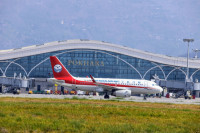
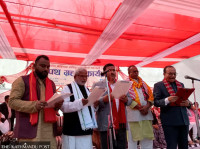










%20(1).jpg&w=300&height=200)

